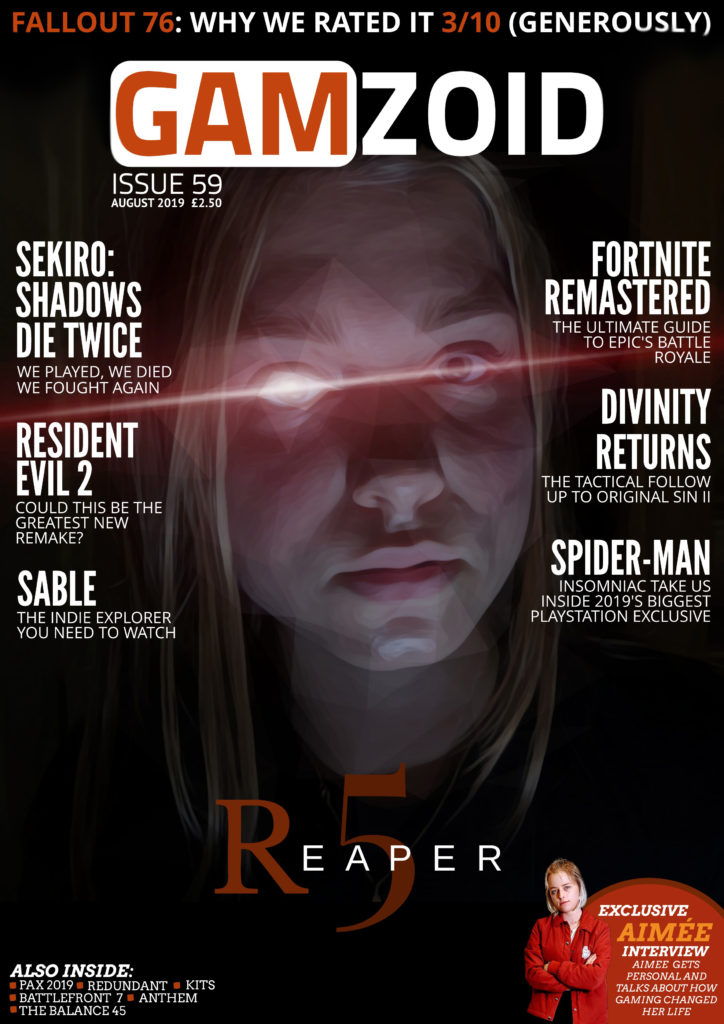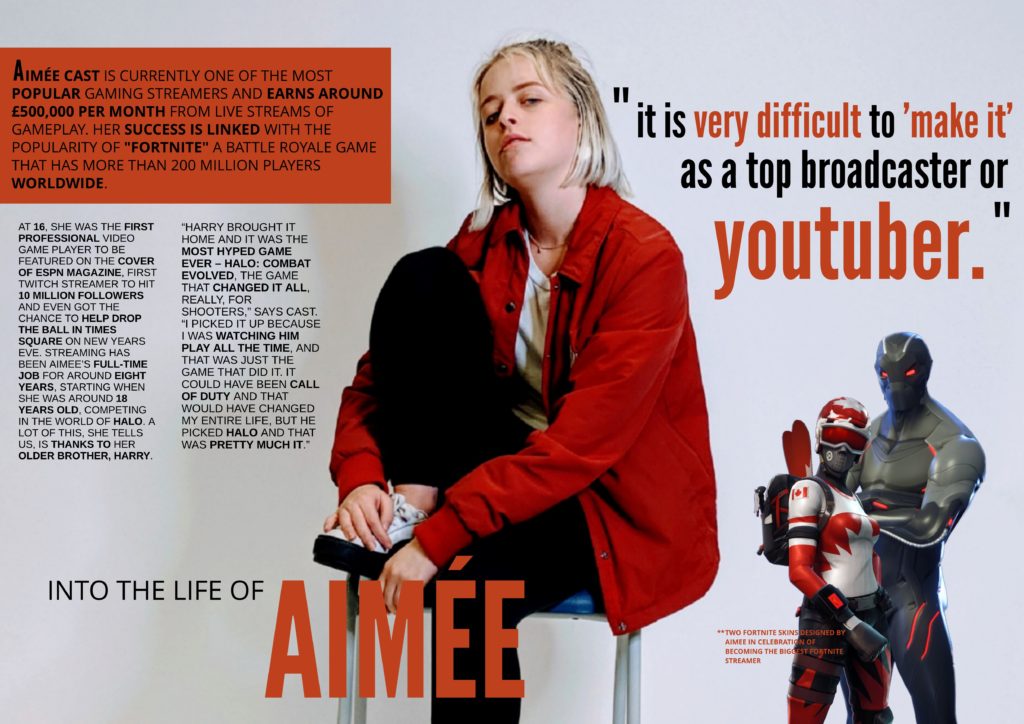I’ve uploaded some of my essays onto my blog if anyone wanted to read some whilst revising. If there are any other essays I haven’t uploaded that anyone wants to see just comment on this post
All posts by Catalina V
Filters
The previous name was not appropriate
CHILD LABOUR ENFORCED LOGO MADE FOR FREE


CSP 14: TELEVISION
THE MISSING
Detective Chief Inspector Sarah Lund is in her last day with the Copenhagen police force; about to move to Sweden to join her fiancé and transfer to the Swedish police. Everything changes when 19-year-old Nanna Birk Larsen is found raped and brutally murdered. Sarah heads the investigation and is teamed up with her replacement, Detective Inspector Jan Meyer. Troels Hartmann, politician, is in the midst of a hard-fought mayoral campaign when evidence links him to the murder. The girl’s family and friends struggle to cope with their loss. Over a span of 20 days suspect upon suspect is sought out as violence and political pressures cast their shadows over the hunt for the killer.
Who is the primary, secondary and tertiary audience for this product?
The Killing acted as a catalyst for the globalisation/ distribution/ popularity of foreign language throughout UK television. However, The Killing was first released in Denmark, 2007, and only aired on UK television 4 years later in 2011.
PRIMARY AUDIENCE:
SECONDARY AUDIENCE:
TERTIARY AUDIENCE:
What audience theories can you apply to which help you to develop a better understanding of the potential target audience?
The reception theory by Stuart Hall – A more conservative audience may respond negatively to the Swedish liberal attitudes to sex.
What organisations (rather than individuals) are involved in the production, distribution & exhibition of this product?
The original series is created by a production company called DR in collaboration with ZDF Enterprises. It was broadcasted on Danish television for the first time in January 2007. After that, it was distributed to many countries worldwide. The show was then recreated in english for the US by Fox Television Studios in collaboration with Fuse Entertainment which was later taken over by Netflix.
WITNESSES
A French crime series explores the dark realms of the human mind with themes of vengeance. Three bodies with no apparent connection to each other are discovered in a show home, based in northern France. The police find the deceased man, woman and teenager staged as if they were a living family. Detective Sandra Winckler arrives at the morbid scene to search for clues leading to the perpetrator but instead comes across a photo of ex-police officer Paul Maisonneuve. The retired policeman is forced to return to work in order to get to the bottom of the grim mystery.
Nordic-Noir: Symbolic montage of the title sequence, muted colours, subdued low-key lighting, long slow pans and tracking shots over landscapes and landmarks, settings often wintery, rural landscapes often presented as ‘bleak’ and urban landscapes presented as industrial.
Example of Nordic-Noir in Witnesses:
- muted colours
- symbolic montage of title sequence
- urban landscapes; shown through aerial tracking shot
- subdued low-key lighting
- bleak setting; bad weather – pathetic fallacy, sense of lifelessness
- flawed protagonist
Who is the primary, secondary and tertiary audience for this product?
PRIMARY AUDIENCE:
SECONDARY AUDIENCE:
TERTIARY AUDIENCE:
What audience theories can you apply to which help you to develop a better understanding of the potential target audience?
Hesmondhalgh’s Ideas on Cultural Industries:
Hesmondhalgh acknowledges that media companies are operating a risky business and there is no guarantee a creative product will be a success. They offset this risk through the use of stars, sequels, well-known genres and vertical integration.
He points out that societies with profitable cultural industries have minimal government regulation. Regulated by Ofcom which work directly with broadcasters to implement a Code for television and radio, which is set out in terms of principles, meanings and rules and include a set of ‘practices to be followed’ by broadcasters.
Examples of Hesmondhalgh’s Ideas on Cultural Industries:
- Released a season 2
- Confirms to conventions of the Nordic-noir and Crime Drama genres
- Walter presents = a joint initiative between Global Series and Channel 4 in 2016
- Witnesses made in France, which would be seen as having a profitable cultural industry.
Todorov’s Narrative Theory:
Equilibrium – Police/detectives just doing their jobs, protagonist taking child to school
Disruption – The bodies are found in Paul’s house, who the protagonist knows. Lipstick found in boyfriend’s car
Recognition – Investigation of the bodies. Goes to graveyard where bodies were dug up. Protagonist speaks to Paul and his relatives.
Repair – As this is the first episode, has not yet taken place.
New Equilibrium – Will be established in a later episode, probably at the end of the TV miniseries = narrative prolonged. Instead: goes back to disruption.
What organisations (rather than individuals) are involved in the production, distribution & exhibition of this product?
Newen Distribution:
Promote shows for Tele group and independent groups such as cinétéve.
‘Programmes of quality which unite viewers’.
Cinétéve:
Independent production company: film, TV and documentaries with a serious focus ; intellectual.
Produced Witnesses.
Kudos Productions:
British film and television production company which has produced television series for BBC, ITV, Channel 4, Sky, Amazon and Netflix. Film unit ‘Kudos Pictures’ set up in 2007.
Walter Presents:
A joint initiative between Global Series Network and Channel 4 launched in 2016. Video-on-demand service dedicated to showcasing award-winning foreign language drama. Launched in March 2017 in US as a VOD service and in November 2017 as a pay-TV service in Australia.
CURRAN AND SEATON NOTES THAT RELATE TO WITNESSES AND THE MISSING
- Curran and Seaton argue that the Uk government policy is responsible in part, for the widespread domination of the media landscape by huge conglomerates.
- Peak time schedules are dominated by the lighter entertainment formats, whereas less popular minority interest products are sidelined to secondary channels or late night slots
- Curran and Seaton suggest that a second and equally turbulent wave of ownership consolidation took place in the latter half of the 20th century
- Owning a variety of media company types enables the conglomerate to distribute product benefits across a range of media forms
A2 Nea






JEAN KILBORNE

Jean Kilbourne, Ed.D. is a public speaker, writer, filmmaker and activist who is internationally recognized for her work on the image of women in advertising and her critical studies of alcohol and tobacco advertising.
FILM AND VIDEO

Her first film Killing Us Softly: Advertising’s Image of Women (and the remakes Still Killing Us Softly and Killing Us Softly 3) are among the most popular educational films of all time. Jay Carr, film critic for The Boston Globe, wrote, “With skill, humor and acuteness, Kilbourne encourages action against these society-weakening images. Never shrill, her indictment is, if anything, understated.”
Her other films include Deadly Persuasion: The Advertising of Alcohol & Tobacco, Spin the Bottle: Sex, Lies & Alcohol, Slim Hopes: Advertising & the Obsession with Thinness, Pack of Lies, and Calling the Shots.
PUBLICATIONS

Kilbourne is the author (with Diane E. Levin) of So Sexy So Soon: The New Sexualized Childhood and What Parents Can Do to Protect Their Kids (Ballantine, 2008). Her book, Can’t Buy My Love: How Advertising Changes the Way We Think and Feel (originally published as Deadly Persuasion by Simon & Schuster in 1999) won the Distinguished Publication Award from the Association for Women in Psychology.
ALL FROM: https://www.jeankilbourne.com/full-bio/
Media products often challenge the social and cultural contexts in which they are created. To what extent does an analysis of the close study products Ghost town and the Letter to the Free support this view.
A theorist called Julian McDougall wrote a book, “Fake News vs Media Studies”, talking about how the place of Media Studies in the age of ‘fake news’, analysing the calls for a curriculum of critical news literacy as part of a cyclical policy debate. McDougal quotes that “There are always points historically where populations have been discontented or economic hardships have been exacerbated” which can link with the CSP’s, Letter to The Free and Ghost Town due to Letter to The Free, a hip hop song being written solely about the continued mistreatment of black people in america (populations being discontented) and Ghost Town being made about the economic crisis happening in the UK (economic hardships being exacerbated). Both of these music videos are similar in a sense that they are both radical as they go against the current dominant belief and that they both bring a political awareness to their audiences to help them see what really is going on around them. We can understand the seriousness of both of these issues presented as a hegemonic struggle through culture, a theory that Antonio Gramsci states that is a continual exchange of power through the use of ideas. This is very clearly a struggle that links to these music videos as Letter to The Free is about the very little equality and negotiation between the black people of America with the rest of their nation, and Ghost Town with the struggle to keep an equal exchange of power with the economic crisis that was happening in the UK at the time. Gramsci’s hegemonic struggle theory is also quite similar to Louis Althusser’s ideological state apparatus theory as Althusser’s theory talks about how most modern day structures of today are built to serve the dominant and ideal perspectives of society a.k.a, they’re built so that there can be a continual exchange of power through the popular ideas created by society which therefore helps us form our own identity and grow as a society. So, with these two theories in mind, by having more popular, dominant and mainstream artists create a discussion on sensitive subjects like Common’s Letter to the Free about how black lives are still being sacrificed and treated like slaves or in The Specials Ghost Town about how economic hardships were being exacerbated, we can therefore make more modern day structures such as the current education system shed light to important issues helping society realise these wrongens and lessen the hegemonic struggle.Not only are these two videos similar in the sense that they are both radical, but they also bring this sense of knowledge post-colonialism through how they convey values, attitudes and beliefs about the world and how these may be systematically reinforced across a wide range of media representations. With both videos being set in a post-colonialist oppressed society yet with different issues that we can identify ourselves in, this can be linked with Jacques Lacan’s theory of “The Other”. “The Other” theory can be understood; as we can’t entirely see ourselves, we instead use a reflection of things we like and don’t like to interpret ourselves. So, Applying this to media studies, it is understandable why we are so obsessed with reading magazines, listening to music, watching films, videos and television because, essentially, we are exploring ‘The Other’ as a way of exploring ourselves and so, applying this to the two music videos, “The Other” actually links very closely to it as we know that by just simply listening to the lyrics throughout each video e.g. the repeated chant of “freedom” in Letter to the Free, each listener will have their own interpretation and reflection of the lyric and therefore will allow them to decide for themselves on how they want to identify with that specific lyric and learn about themselves.Another post-colonial perspective can be from Paul Gilroy’s point of view is that audiences have a “Double Consciousness”, which is how we can’t dismantle and get rid of oppression from the bottom lower working class, but rather how it has to be from the upper classed privileged people and so the only way these privileged people can get rid of oppression is by letting them see and imagine how life would be like for those who aren’t as privileged as them. In Common’s Letter to the Free, Common talks about how African Americans and other people of colour can still be considered as slaves due to the 13th amendment allowing prisoners to be treated and punished to work as slaves so therefore, with the title “Letter to the Free”, Common is calling to those with more privilege and freedom to have this “Double Consciousness” and use their freedom to help speak up and raise awareness about the mistreatment of people of colour in the USA. In Ghost Town, The Specials are calling their audience to recognise the economic crisis happening and help people who are out of work and refused to leave the house because they were scared about getting robbed or murdered in the UK.I truly do believe that music videos can possibly change the way we view different ideas, such as dominant cultural and social ideas such as race, gender and class, because Letter to the Free was and still is a powerful song made by a black man about the discrimination of black people across America, making Letter to the Free a petition to end this mistreatment against people of colour and same goes for Ghost Town, a song that brought awareness to the economic crisis violence that was happening across the UK. The concept of post-colonialism helps us understand the traumatic events that lead up to almost everything that happens today alongside with the help from sub theories within this topic such as Lacan’s “The Other” theory or Gilroy’s “Double Consciousness” allowing us to learn about different cultures as well as understand more about ourselves.
Curran and Seaton present the view that a free press relies on a free market where individual newspapers can compete through their political stances and points of view. Analyse the ways that The i and the Daily Mail attempt to establish a distinctive identity within this free market. To what extent has this been successful? Refer to the specific edition of your case study – for both papers – as well as, on-line versions of these publications.
Freedom of the press or freedom of the media is the principle that communication and expression through various media, including printed and electronic media, especially published materials, should be considered a right to be exercised freely. ‘Different stances different news organisations or types of organisations take toward different audiences in the marketplace‘ (Curran, 1980). Compared to free media/press, the free market is an economic system based on supply and demand with little or no government control. Free markets are characterized by a spontaneous and decentralized order of arrangements through which individuals make economic decisions. The radical press, newspapers or print media that emphasises ideologies that are considered extreme or against dominant ideologies, was so influential that the backing of other daily newspapers may convey the idea of shared interests. In addition, the rise in costs of print media during the nineteenth century meant that there was large competition between newspaper enterprises. ‘The best test of truth is the power of the thought to get itself accepted in the competition of the market’ (Curran, 1980).The i was launched to pose a challenge to existing ‘quality’ newspapers with low cover prices and tabloid formats. It has battled to remain ‘cheap’ or at least ‘cheaper’: the weekday edition rising from 20p to 50p but can be freely read in many large UK airports. This relates to The Free Market theory as The i making their prices the lowest they can means they are trying to make their information as accessible as possible to their audience. This can also relate to Habermas’ Public Sphere theory as by making their papers as accessible as they can be, this can allow for wider demographics to connect and share ideas rather than these ideas being mainly restricted and accessible to only socially higher powers such as government and royalty or letting these ideas be changed and sent out to better suit the image of the government or royalty. The i doesn’t have a definitive political stance and is used more to convey factual news stories rather than manipulate it’s audience with propaganda from either right wing or left wing stances and has maintained a reputation after winning National Newspaper of the Year in 2015. An example of The i’s neutral stance is an article, written by Cahal Milmo, named “Biden edges closer to power after night of deadlock and rancour” which talks about how Biden and the Democrats managed to take the lead by gaining Wisconsin’s and Michigan’s votes after a close call of republicans almost taking Wisconsin and Michigan instead. Milmo manages to remain neutral with the article by referring to each party and referring to each presidential candidate by their real names rather than using name calling or bullying them like other papers have been, such as The Daily Mail calling Biden “Sleepy Joe”. This connotes that The i has an active audience as opposed to passive as with the neutral articles they produce, the audience can form their own views and opinions which therefore can refer to Bulmer, Katz and Haas’ Uses and Gratifications theory as it assumes the audience chooses themselves with what they want to watch and therefore the audience aren’t forced to buy, read and believe a certain view and opinion and are simply just reading it to get a balanced amount of information and education. The i is active on social media as well, reinforcing it’s radical balanced views by being up to date with new technologies and being able to keep up with the generational shift on how most teens and young adults use technology to keep updated with the news. There is also a discounted student subscription to The i that lasts for one academic year. This relates to Free Press/Media as The i tries to provide the most politically unbiased articles and views as possible and isn’t particularly swayed by specific politicians or government views/actions when producing articles. But, as of 10 months ago the owner of The Daily Mail, Lord Rothermere gained ownership over The i newspaper. This can be seen as an issue because even though Lord Rothermere and The i editor Oly Duff have both insisted that editorial independence would remain, The Daily Mail is well known for publishing fake news and therefore the fake news produced in the daily mail editor offices may carry over to The i editor offices, ruining the reputation and quality non-biased news articles The i has produced in the past. This links to Noam Chomsky’s Manufacturing Consent (How the media can manipulate stories ideas and concepts in order to portray a feeling of agreement and consent.) as having more richer higher powers own more media outlets, this means more filtered, manipulated and potentially propagandized information to better suit the narrative of governments and other higher powers to make them appear to be omnibenevolent amongst their people.Fake News is the deliberate attempt to publish hoaxes and/or disinformation for the purpose of profit or influence. The Daily Mail is published in London in a tabloid format. Established in 1896 by Harold and Alfred Harmsworth and Kennedy Jones in 1896, it is the United Kingdom’s highest-circulated daily newspaper but tends to promote extremely biased articles, consistent promotion of propaganda/conspiracies, poor or no sourcing to credible information, a complete lack of transparency and/or is fake news. Harold Sidney Harmsworth is also known to be an admirer of Mussolini and a supporter of Nazi Germany which can link to Free Press/Media as this can mean that The Daily Mail has most likely been promoting and producing Fake News and right wing propaganda since it first started in 1896 which goes against what Free Press/Media is as this means that The Daily Mail has been providing their readers with false information and misleading their audience for decades. The Daily Mail’s is a subsidiary of DMGT, a media conglomerate which owns newspapers including the Daily Mail, the Mail on Sunday, which again can link to Noam Chomsky’s Manufacturing Consent as having already large conglomerates, such as DMGT, own more media outlets means more manipulated narratives and makes the production and spreading of propaganda easier. Another theory that relates to this is Habermas’ Public Sphere but because The Daily Mail’s audience may connect and spread the ideas produced from fake news they read from The Daily Mail which ultimately creates gossip and even more fake news. This makes The Daily Mail a reactionary news outlet as they produce articles that are purposefully structured to create and bring out a reaction from their audience, whether good or bad. An example of The Mail’s reactionary right-winged articles is “The Biden Landslide that Never Happened” written by Arthur Martin, within the article Martin talks about how Biden’s (left-wing) major promises he made if he were to become president, such as climate reforms like having a net zero emissions target, would completely tank and fail due to how likely the Republicans (right-wing) are to remain control of the Senate. A quote from the article, proving the article’s right-winged stance even more is “As he inched closer to the White House last night, Joe Biden and his supporters cautiously started to celebrate. But as the dust settles on the nail-biting race, Mr Biden’s team will privately hold a post-mortem into why he came so close to defeat”, which talks about how Biden and his supporters will slowly start celebrating his victory as he is very close to winning himself but as the presidential race comes to an end, Biden’s team will try look into why he “came so close to defeat” which is a lie as currently (Thursday 5th November), Joe Biden is at 264 votes compared to Donald Trump who is at 214 votes. This can be seen as Cultivation Theory as The Daily Mail has a passive audience that they are repeating the message to that the left/democrats are “bad” as they have unrealistic plans and views that could never actually be achieved, so therefore their audience shouldn’t vote for left-wing politicians or else they would be disappointed because of false promises that are unachievable like Joe Biden has apparently done according to the article they have written about him. Martin has also named Biden “Sleepy Joe” making fun of Biden’s old age and used an image of an African American male wearing a “MAKE AMERICA GREAT AGAIN” t-shirt, contradicting the dominant belief of POC being against trump.
What key theoretical approach would help you to think critically about the Score hair cream advert? Show a full and complete understanding of this theoretical area by applying your knowledge and understanding to the Score hair cream advert.
Score hair cream is an advert that emphasizes the continuous historical character of gender with the fact that it is constituted in time. In terms of Feminist Critical Thinking, the advert was created and advertised in the 1970’s, a prominent time for the second wave of feminism with the introduction of the pill, the decriminalisation of homosexuality, equal pay act and so on, which was seen as a radical view at the time due to the heavily patriarchal powered society there was in the 70’s. Within the advert, the women are wearing little to no clothing whilst reaching up to the only male in the advert in order to be sexualised and eye catching to the consumers of the advert (males), this can be seen as an example of the “Male Gaze”, a theory Laura Mulvey introduced that suggests that every piece of media that we consume is formed and structured around the dominant views of a white male hegemonic society and also and example of fetishism and how women are viewed as objects of desire rather than being respected and acknowledged as actual humans and in Score’s case, the women are not only in skimpy outfits, but are also purposefully positioned below the male, who is also on a throne, to connote the amount of superiority and power a female has (very little) compared to a man which is also apparently amplified if the male uses Score Hair Cream. Ariel Levy’s Raunch Culture can also be referenced to this advert due to the amount of exposure each woman inside of the advert has with how much clothing they are actually wearing further promoting the over sexualisations of women. This Score advert can be seen as an example of Gerbener’s cultivation theory for an advert of its time as other adverts, such as Tipalet’s cigarette advert “Blow in her face and she’ll follow you anywhere”, tended to repeat the dominant ideology that women are solely objects that only exist for male entertainment and with Score, the objectification of women is reinforced even more as they are perceived as trophies due to the m. this means that the audience reading and consuming this print advert is passive and accepts all messages this print advert is trying to promote which is the oppositional binary between men and women that men can gain more power by using Score hair products and more women will submit to you if you use it.In contrast to the Score print advert, “Oh..” is a magazine that celebrates authenticity and empowerment within feminism shown by its front covers that solely present women and only women and their articles that celebrate women for being the modern day feminists they are, for example, in issue 35 of “Oh..” magazine (Oh Comely at the time), they did an interview with Amali De Alwis, the CEO of Girls Code First and celebrating her as a woman of colour who is encouraging other females to start coding and join STEM, which tends to be a male dominated technology industry. Set up by three women who used to work for a popular publishing conglomerate, they felt that they could set up a magazine that constructs a representation of femininity with its focus on creativity and quirkiness. With this focus on femininity and quirkiness, Oh focuses on promoting body positivity and that all females are beautiful no matter what they look like which is very much outside of the male perspective and therefore can be seen as a radical hegemony suggesting that Oh magazine’s sole purpose is to empower women representing the main feminist message as women should feel comfortable in their own skin and that they should work together to power through modern day social injustices such as the gender pay gap.Judith Butler quotes “gender as performativity.” Which means that the actions deemed appropriate for men and women have been released and presented to produce a social impression that keeps and authenticates a “natural” gender binary. Butler is basically saying we associate these different themes with the genders, such as girls wearing pink, only exist because as humans, we collectively agree it exists; it is a social construct. In reference to Score Hair Cream, it supports Butler’s ideas that gender is just a repertoire of acts as the dominant ideology in the 70’s was that for something to be considered masculine, it needed masculine features such as, the one male within the advert with strong muscles, healthy looking hair and and a gun in contrast to the women within the advert in crop tops and mini skirts with long hair.Oh! And Score have very different views on the different binaries between men and women as Oh! Suggests a more feminist and radical approach on these binaries suggesting that women should feel empowered rather than inferior to men and that they should be equal, but, Score suggests otherwise solely from the mise-en-scene of the print advert with the women in little to no clothing exposing themselves, objectifying women and suggesting that they are only there to please men, carrying the only man who has stronge muscles and a gun to defend himself, radiating his masculinity that has been enhanced because of Score Hair Cream. Though 50 years apart, they are manifestations of the same ongoing process that is happening today due to the hypersexualisation of women on new media such as music videos like “Blurred Lines” by Robin Thicke contrasted with digital feminist campaigns such as the “MeToo” movement, creating the illusion of gender difference.
postcolonialism in th score
- the ways in which different parts of a product’s audience may offer quite different readings of that product according to how they are positioned to it socially, culturally and politically
- For example, the structuring of a dominant ‘white’ representation with clear references to a colonial past (dominated by white males, served and supported by white females) and how that narrative fits into ideas of postcolonial reception.
- There is an opportunity to employ both cultivation theory (Gerbner) and reception theory (Hall) to support an examination of how groups might be positioned by their socio-cultural status (reinforced by dominant modes of representation) and may position themselves politically to offer ‘dominant hegemonic’, ‘negotiated’ and ‘oppositional’ readings (Hall, Gramsci)
- Such an approach allows for an examination of the advert in terms of DOUBLE CONSCIOUSNESS (GILROY), CULTURAL ABSOLUTISM / RACIAL ESSENTIALISM / CULTURAL SYNCRETISM, in other words how is society representing itself? How are individual groups within society being represented? Does the text require a reading of double consciousness to mask the veil (W B Dubois)
- The advert creates ideas of the ‘other’ (Lacan, Said, Fanon etc). Of the way in which the exotic = the erotic, that is ideas of Orientalism developed by Edward Said.
- In doing so does the advert create a ‘diaspora’ of existence for those who are not included? Does it work against the values of multi-culturalism and plurality / pluralism?

